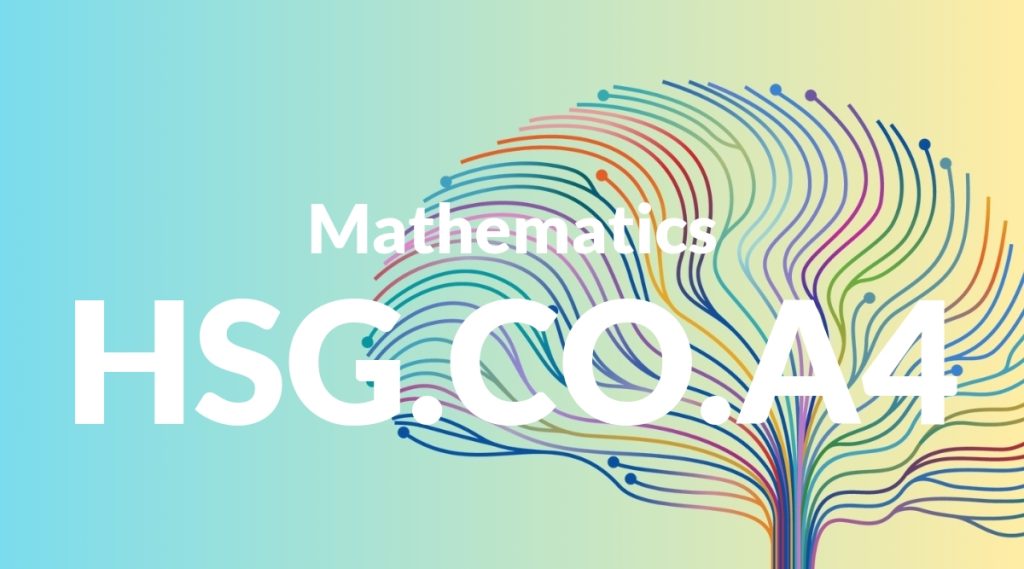Standard: HSG.CO.A4 – Develop definitions of rotations, reflections, and translations in terms of angles, circles, perpendicular lines, parallel lines, and line segments.
Grade level: High School: Geometry
Subject: Mathematics
Domain: Congruence
Teacher Overview
This standard focuses on developing precise definitions and understanding of geometric transformations such as rotations, reflections, and translations. These concepts are foundational for higher-level geometry and are crucial for solving complex geometric problems. Understanding transformations helps students see the connections between different geometric figures and their properties. Students need to be familiar with basic geometric concepts, including identifying and constructing angles, parallel lines, and perpendicular lines. They should also be comfortable with basic shape properties and measurements.
After mastering this standard, students will be able to apply transformations to analyze and solve geometric problems. They will also be prepared to explore advanced topics like similarity, trigonometry, and the geometric properties of shapes in more depth.
Common Misconception 1
A common misconception is that a shape’s orientation changes during a translation. This is incorrect because a translation moves a shape in a straight line without altering its size, shape, or orientation. Students often confuse translation with rotation or reflection.
Intervention 1
To address this misconception, use visual aids such as grid paper or interactive geometry software to show that translations involve sliding a shape along a vector without changing its orientation. Encourage students to trace shapes before and after translation to observe that the orientation remains the same.
Common Misconception 2
Another misconception is that students might confuse the effects of rotations and reflections, thinking they produce similar outcomes. This is incorrect because rotations turn a shape around a fixed point, while reflections flip a shape over a line, creating a mirror image.
Intervention 2
To remediate this, provide hands-on activities with physical models or digital tools where students can manipulate shapes to see the distinct results of rotations and reflections. Encourage them to describe the differences in their own words and use diagrams to illustrate their understanding.
Prerequisite Knowledge
Students should have a solid understanding of basic geometric shapes, properties of angles, and the ability to identify and construct parallel and perpendicular lines.
Subsequent Knowledge
After mastering this standard, students will be able to apply transformations to solve geometric problems, understand the properties of congruent figures, and explore more complex geometric concepts such as similarity and trigonometry.
Instructional Activities
- Use interactive geometry software to visualize and manipulate transformations.
- Create art projects that incorporate symmetry and transformations.
- Solve real-world problems involving transformations, such as designing patterns or planning movements in sports.
- Conduct hands-on activities with physical models to demonstrate transformations.
- Use graph paper to practice drawing and identifying transformations.




